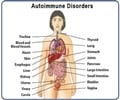Patients with rheumatoid arthritis may face higher drug costs and barriers to newer medications.

Medicare Part D is a federal health insurance plan that provides prescription drug benefits to older and disabled Americans, and the program has expanded to include many of the latest therapies to treat RA. However, the program requires participants to pay full costs for medications when a certain dollar amount has been reached, known as a coverage gap. Biologic disease-modifying anti-rheumatic drugs (also called DMARDs) are effective but expensive medications proven to slow RA disease progression and symptoms. Yearly costs for biologic medications can range from $12,000 to $48,000 or more with traditional health insurance.
To understand the potential impact of paying full price for medication during the coverage gap, researchers from the University of California, San Francisco, compared the out-of-pocket expenses for RA drugs. The expenses were calculated for two groups: patients responsible for the medication’’s cost during the coverage gap and patients who were eligible to receive the same therapy at a significantly reduced cost.
"We found that many patients face high costs during the coverage gap for biologic drugs. Those that don’’t face high costs because they are eligible for low-income subsidies are actually much more likely to be on a biologic through their Part D benefit," says Jinoos Yazdany, MD, MPH, co-investigator of the study and assistant professor in residence and at the University of California, San Francisco.
The researchers found that patients eligible for low-income subsidies that cover the cost of medications during the coverage gap were significantly more likely to receive biologic drugs for RA through Part D than those without subsidies. This suggests that the coverage gap may prevent patients who face substantial cost-sharing from accessing biologics through Part D.
Researchers reviewed insurance claims from a random sample of patients who received government health insurance and participated in the prescription drug program, Medicare D. The study included 5,808 individuals at least 65 years-old, with at least two medical visits for RA, were continuously enrolled in the government prescription plan and had at least one prescription for RA during the year.
Advertisement
The researchers studied data from 2009, and among the 5,808 participants with prescription coverage that included DMARDs, 679 (12 percent) were classified as biologic DMARD users, 5,129 (88 percent) as non-biologic DMARD users and 1,414 (24 percent) received a low-income subsidy. Additionally, 44 percent of biologic DMARD users received a low-income subsidy compared to 22 percent of non-biologic users under Part D.
Advertisement
The study suggests that many elderly patients with RA who face substantial costs for their biologic drugs may have trouble accessing them through Part D.
Funding for this study was provided by the National Institute of Health, The National Institute of Arthritis and Musculoskeletal and Skin Diseases, University of California, San Francisco Resource Allocation Program and University of California, San Francisco Rosalind Russell Center for Arthritis.
Source-Newswise














